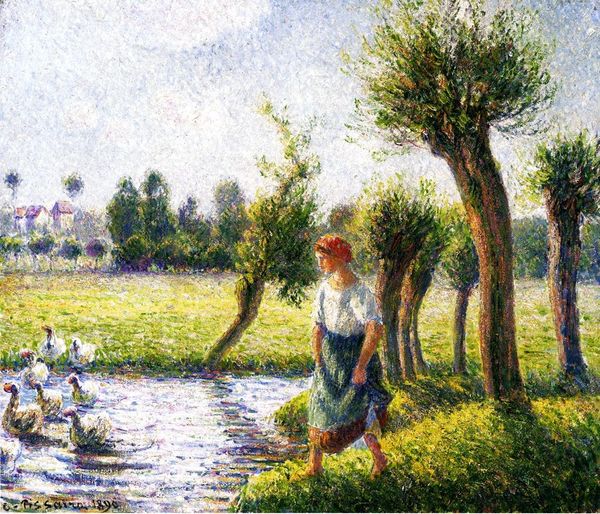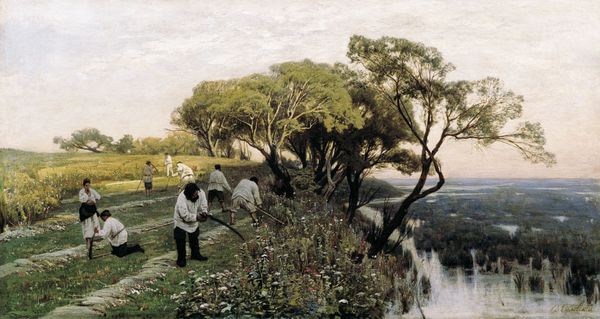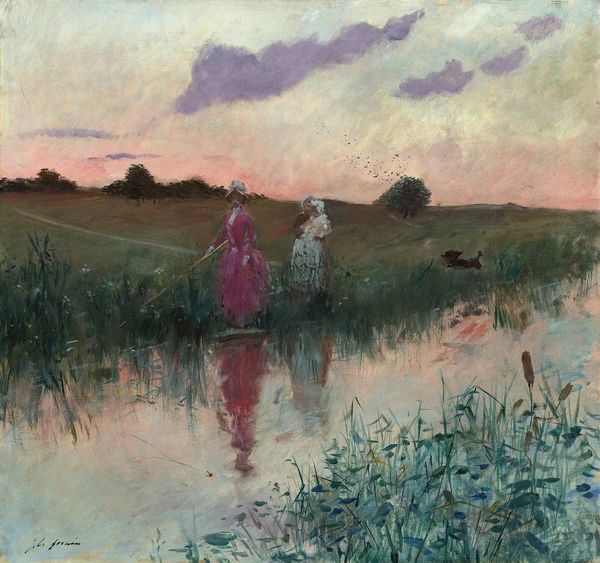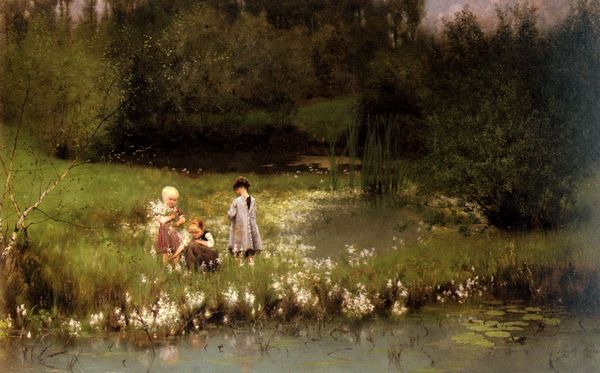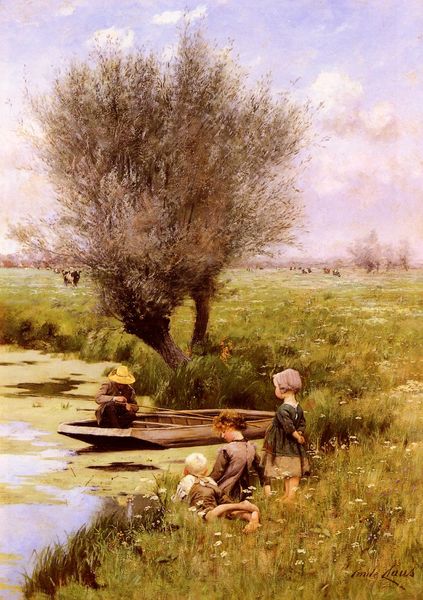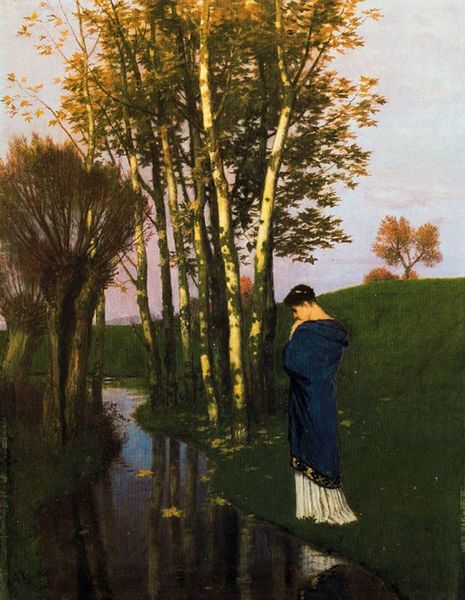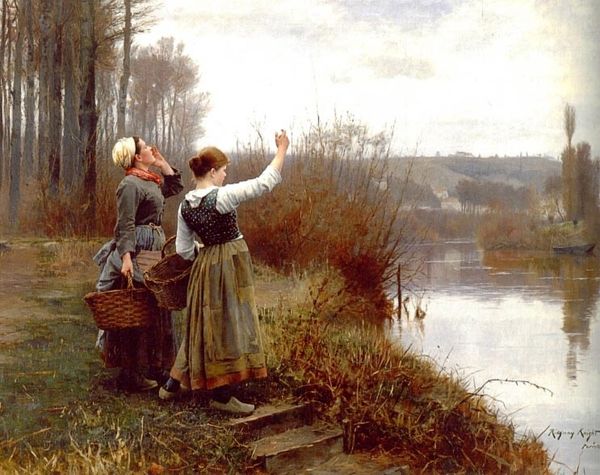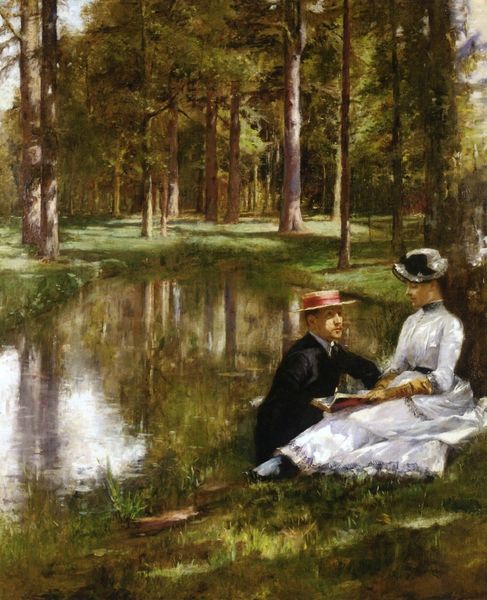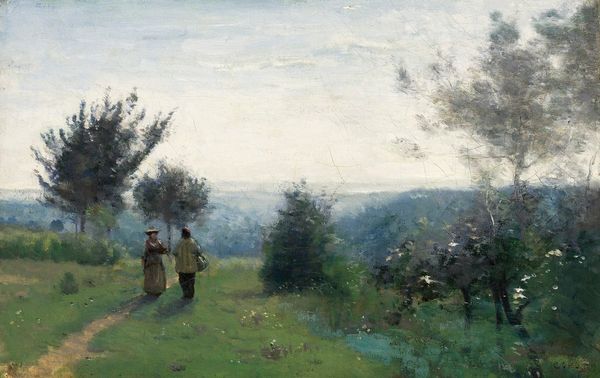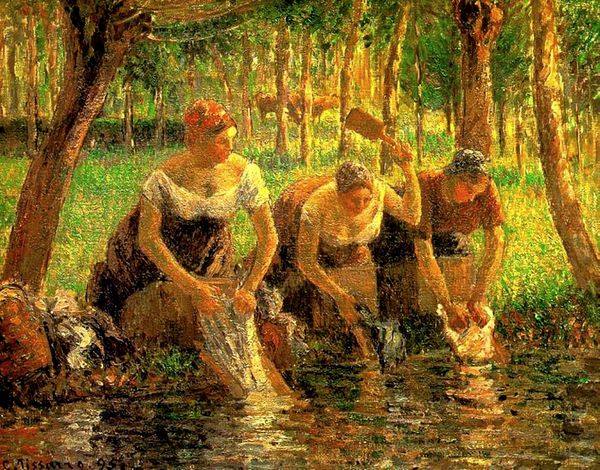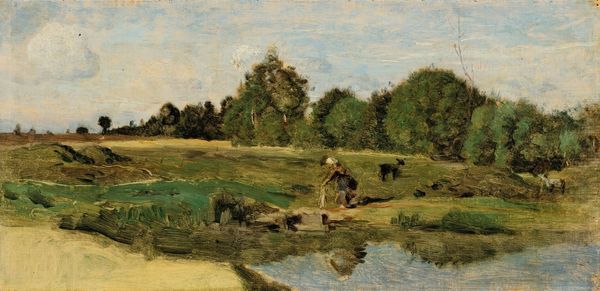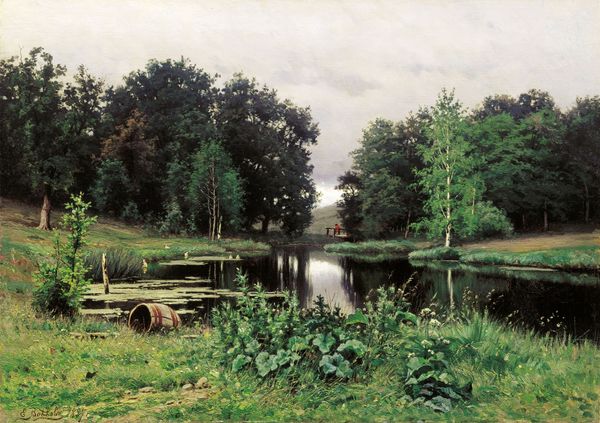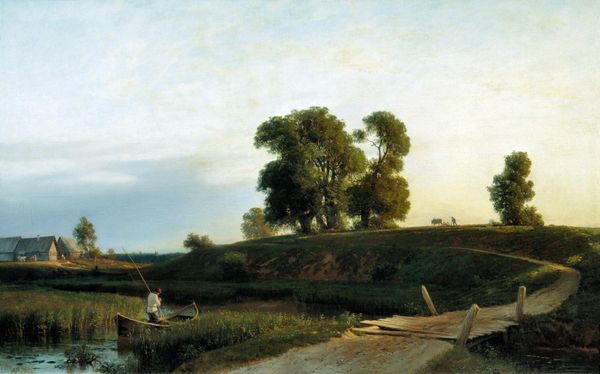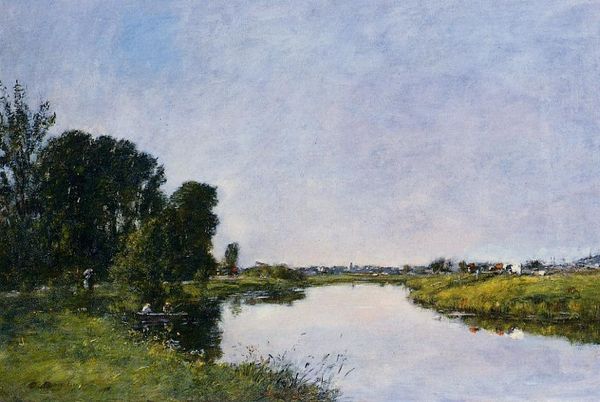
painting, plein-air, oil-paint
#
portrait
#
painting
#
countryside
#
impressionism
#
plein-air
#
oil-paint
#
landscape
#
figuration
#
nature
#
group-portraits
#
genre-painting
#
nature
#
realism
Copyright: Public domain
Curator: This painting offers a tranquil scene. It depicts two young peasant women near the Leie river. It’s believed to be created by Émile Claus. Editor: Immediately, I'm drawn to the heavy texture of the oil paint and the brushstrokes, which give such life to the vegetation on the riverbank. The overall effect feels rather tactile and visceral, hinting at the very physicality of agricultural labor. Curator: Absolutely, the texture speaks volumes! Émile Claus was one of the leading figures of Belgian luminism, focusing on capturing light in the Belgian landscape. Claus’s art captures a crucial transitional moment, revealing the impact of both realist concerns for representing peasant life and impressionistic interest in the play of light and color, impacting the way their activities were documented. Editor: It’s interesting how the artist emphasizes labor, representing women, traditionally homemakers, who often undertook some form of physical, rural labor, making significant contributions to agricultural societies and rural economies. What do you make of the choice of medium—plein-air style? How does that relate to Claus' overall intentions? Curator: Working outdoors certainly shaped his perception of light. I find that painting *en plein air* wasn’t just about accurately representing visual reality. Rather it involves particular techniques and ways of seeing intimately tied to Impressionistic values of modern art. This method captured the subtle fluctuations of daylight on the landscape. This direct interaction of artists to subjects changed the nature of both their paintings, how they painted, and how paintings and art related to an everyday lifestyle, as seen in their domestic interior decor or fashion. Editor: You can almost feel the heat of the day radiating from the canvas, which contributes to the artwork's sense of capturing a fleeting, yet familiar moment in time. Thinking more historically, the image provides insight into rural society and its connection with water sources. We see hints of structures near the riverside, what stories do you think Claus was aiming to reveal in this artwork? Curator: Claus provides an insightful observation regarding the transformation of rural society at the end of the nineteenth century, demonstrating labor both directly and indirectly. These images of young women may evoke deeper sentiments concerning gender relations. In rural European settings, paintings could function both aesthetically as representations of female figures but also have strong symbolic meaning. Editor: I agree entirely! The cultural and political implications—seen here through gendered and rural realities—are extremely engaging, bringing art historical and present-day dialogues to the surface. Curator: A truly thoughtful portrayal from an artistic eye invested in modern issues!
Comments
No comments
Be the first to comment and join the conversation on the ultimate creative platform.
